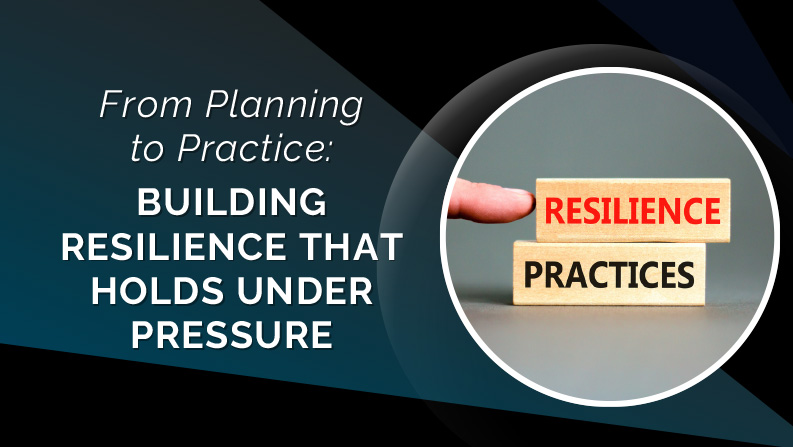A 90-Day Operational Playbook for Executives Who Want More Than a Binder
In the first 90 days of your resilience journey, the mission was simple: get visibility. You mapped your critical systems, surfaced your gaps, and scored your risk in real-world terms.
Now it’s time to move from insight to action.
This second phase—Days 91 to 180—is where strategy becomes reality. It’s where teams get aligned, fallback plans get built, and your ability to respond to disruption moves from theory to something you can actually test.
You’re not writing policies anymore. You’re building muscle memory.
Phase Two: Build Lightweight, Effective Resilience Structures (Days 91–180)
This isn’t about perfection. It’s about building what works—for your actual business model, not some textbook framework. Here’s how to break it down:
Step 1: Draft a One-Page Business Impact Plan (Weeks 13–14)
Goal: Know which systems matter most, how long you can function without them, and what the backup plan is.
What to Include:
- System Name & Owner – One person, not a committee.
- Impact if Down – Financial, operational, reputational.
- Recovery Time Objective (RTO) – How fast does this really need to be restored?
- Fallback Plan – Manual process, alternate software, or communication workaround.
Keep it to one page.
Print it. Tape it to a wall. People should see it, not search for it.
Step 2: Create a Response Call Tree & Communication Plan (Weeks 14–16)
Goal: Ensure everyone knows who to call, when to escalate, and how to communicate.
Build It Like This:
- Tier 1: Critical response team (IT, Ops, Exec)
- Tier 2: Department leaders / suppliers
- Tier 3: External stakeholders (clients, regulators)
Also define:
- What triggers activation? (E.g. ransomware alert, ERP failure)
- How do you communicate if email is down?
- Who updates employees, suppliers, and customers?
Print it. Test it. Update quarterly. If your call tree lives in a spreadsheet buried in SharePoint, it doesn’t exist.
Step 3: Run a Tabletop Drill (Weeks 16–18)
Goal: Stress test your team’s readiness without waiting for a real crisis.
Keep It Simple:
- Pick a scenario:
A ransomware attack locks up your ERP system.
A phishing campaign compromises a shared inbox.
Cloud file access goes down for 24 hours.
Walk through:
- Who notices first?
- Who gets called?
- What happens in the first 30 minutes?
- How do you continue critical operations?
You’ll always uncover blind spots, miscommunications, or “I thought someone else was doing that.” That’s the point.
What This Phase Delivers
By Day 180, you’re no longer reacting. You’re rehearsing. You’re delegating. You’re aligning resilience to how your business actually works.
You now have:
- A clear map of what matters most
- A tested playbook for how to respond
- A team that knows their role before the next disruption hits
Resilience is Repetition, Not Reaction
Building a policy is an event.
Building resilience is a rhythm.
You don’t need to hire a full security team or drown in documentation. But you do need structure, communication, and practice that can withstand the unexpected.
The next article in this series will walk you through how to operationalize and sustain what you’ve built—including how to communicate your progress to stakeholders, tighten your supply chain security expectations, and evolve your plans as your business grows.
Ready to pressure-test your team’s response plan?
Let’s walk through it together.
https://huntleigh.com/resilience-first-cybersecurity-solutions/





